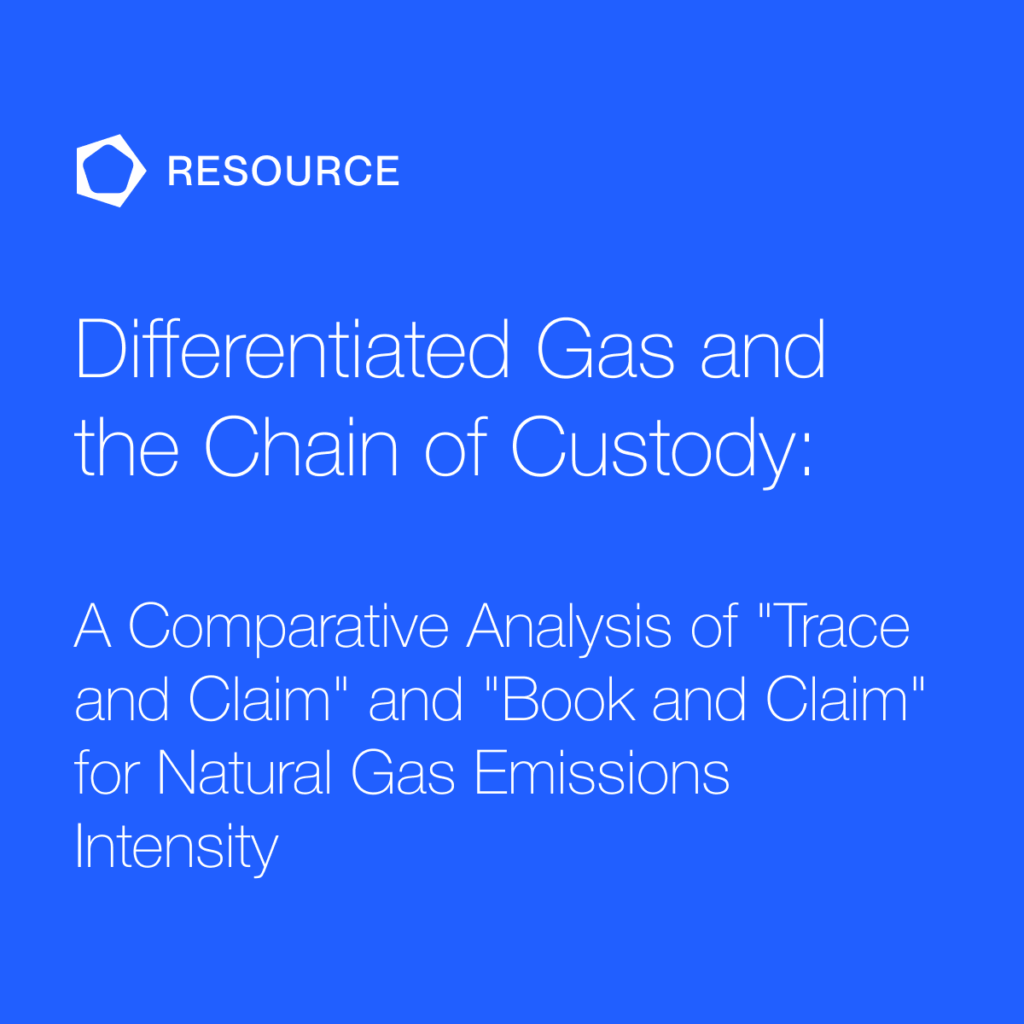A Comparative Analysis of “Trace and Claim” and “Book and Claim” for Natural Gas Emissions Intensity
The widespread adoption of LNG transformed natural gas into a global commodity subject to commercial and regulatory pressures. These pressures have led to the transition to “differentiated gas” in the global natural gas markets, which a commodity valued for its environmental attributes, particularly its emissions intensity. This shift is driven by new, stringent regulations, such as Article 27 and Annex IX of the EU Methane Regulation, which mandates provenance and emissions data for imports. This requirement necessitates a credible chain-of-custody model to track attributes through the fungible, co-mingled gas supply chain.
This paper compares two of the primary accounting-based chain-of-custody models: “Book and Claim” and “Trace and Claim”. This analysis finds that the Book and Claim model, which decouples environmental attributes from the physical product, offers flexibility by creating two disjointed markets but is fundamentally incompatible with new provenance-based regulations and carries significant speculatory and greenwashing risks. In contrast, the Trace and Claim model transactionally binds attributes to specific, nominated volumes of gas via Sale and Purchase Agreements and a “plausible physical pathway” requirement, thereby fully complying with both the letter and intent of the regulation.
We demonstrate that Trace and Claim is not only compliant with regulations, but also operationally feasible, supported by existing contractual frameworks like NAESB addenda and active commercial implementations using technology to enforce contractual obligations.
The paper further outlines a major, but often unrecognized, value of the Trace and Claim model, which is its flexibility in its data requirements. Even though Trace and Claim has been criticized as being too difficult to implement, we show that it is a scalable framework that can be implemented immediately using readily available estimated data (low-fidelity) to meet initial reporting rules, but can evolve to incorporate high-fidelity, measurement-based, and tokenized data as technology, markets, and regulations mature. This evolutionary potential, combined with its ability to directly incentivize producer-level abatement, makes the Trace and Claim model the ideal architecture for a high-integrity, differentiated natural gas market.
Download the paper


By Gavin Nicol, Chief Technology Officer, Context Labs
Gavin is a technology leader and innovator with 25+ years working at corporate research centers in Japan, and corporations and startups in the US and the Netherlands. A serial entrepreneur, he has co-founded multiple companies with successful exits to Oracle, Sina Weibo and others. He is an expert in I18N, scalable blockchain and distributed technologies, security models, identity models, large scale data analytics, graph analytics, and on applications of these technologies within verticals.
Related
Sep 24, 2025
Reimagining Emissions Transparency in the Energy Supply Chain
The global energy sector is at a turning point where emissions transparency is no longer of secondary concern, but a central driver of competitive commercial advantage and operational integrity. […]
Sep 10, 2025
Experience the Future of Carbon Management with Context Labs, Microsoft, and Williams
Watch the replay of the webinar with Context Labs Chief Operating Officer Nathan Brawn, Williams Vice President Environmental, Regulatory & Permitting Mark Gebbia, and Microsoft Managing Director Bill Robertson.
